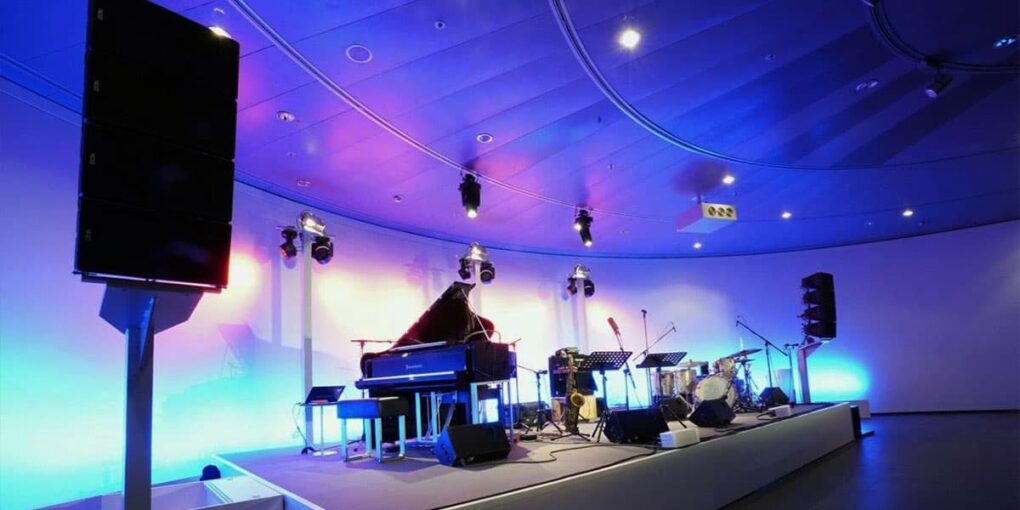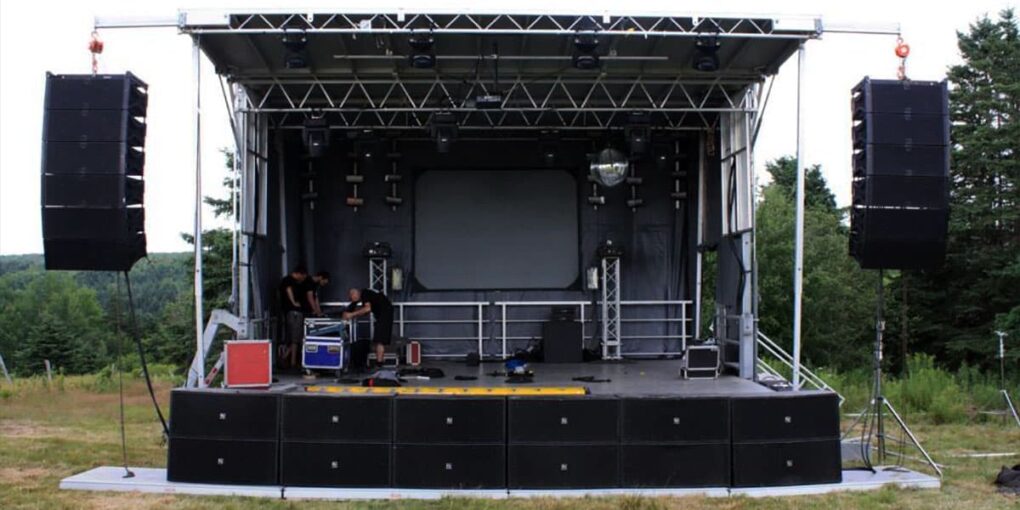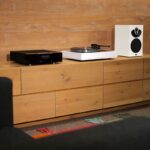Stereo sound live performances used to be primarily for recorded music. As I’m sure you know, stereo means having two audio channels – left and right. This lets instruments and voices spread wide instead of being stuck in one place.
For a long time, live shows did not use stereo sound live performances. The music all came from one stage area through basic speakers. But in the 1960s and 70s, concerts started getting way better stereo audio setup live. Groups began using stereo soundstages live to make shows more immersive. Fans felt inside the music, with sounds surrounding them from all directions. This changed the whole concert experience.
Keep reading to learn how bands pulling off live music stereo sound impacted both fans and the music industry as a whole. In my humble opinion, the move to stereo concerts brought a whole new dimension to live music.

Live stereo sound
So, let’s clarify again. Stereo means there are two audio channels – left and right. Old public address systems were monophonic, and everything was broadcast from one central location. Instead, stereo distributes various elements over a wide space.
For this to work live, bands need the right stereo setup. They set up separate stacks of left and right speakers facing the crowd. The mixer directs certain microphones and instruments in one direction or another. For example, the drummer’s microphone is connected to the left stack, and the guitarist’s amplifier is connected to the right. Fans can now hear the drums and guitars from different angles, such as standing between the musicians. The vocals usually remain centered on the PA speakers behind the band. With the right room layout, the sound surrounds the audience, almost like they are on stage.
Setting up amazing stereo sound for live music took work: balancing the levels of the two speaker systems and positioning the microphones correctly. But it allowed fans to experience true sound that monophonic acoustics would never be able to achieve. And it allows modern groups to create unique shows. As you can see, stereo has completely changed the possibilities for live performance.
Advantages of stereo sound in live performances
The stereo sound of live music allows the audience to truly feel like they are part of the show. With older mono speaker systems, fans simply hear the music coming from the stage. But the stereo surrounds them with different instruments and vocals coming from all over. People also have a better understanding of where sounds are coming from.
Stereo also makes the sound clearer and fuller than single-speaker systems. The left and right are combined, creating a powerful, clear sound. Some bands even miked the crowd to pump the sound through the sound system. This allows fans to hear themselves singing or clapping in the mix.
Bands can also get creative with the use of a stereo soundstage live music. Some placed the lead vocal mic front and center, panned the keyboards and rhythm guitar to the left, and panned the bass and lead guitar to the right. Engineers could isolate certain guitar or keyboard solos by running them through the same stack. The options were wide open.
Overall, stereo allows bands to completely immerse the crowd from all angles. And this gave their sound more clarity and energy. I can say that from this point on, live performance has gone to a new level. This allows innovative groups to put on unique shows. Stereo has completely changed the possibilities for live performance because it allows listeners to feel inside the music rather than just hear it.

The future of live music stereo sound
The stereo sound changed concerts forever. But new advances build on it even more. One big thing coming is object-based mixing. This lets sound engineers send any instrument or mic to any speaker during the show. So the lead vocal could move right from the PA to a side stack mid-song.
Another innovation is 3D sound formats like Dolby Atmos for live rooms. These systems add speakers all around, even on the ceiling. Fans feel like they’re inside the music.
Virtual and augmented reality will also play a role. Imagine wearing VR glasses at a concert – the stereo sound seems to come from that digital world you see. Or AR visuals that appear on the stage in front of you and sync perfectly with the live stereo audio.
The ideas keep expanding thanks to digital tech. But it all started with bands realizing the potential for stereo sound live performances to surround and immerse crowds. Stereo opened a creative frontier for concert sound. And now, new tools let engineers mix immersive “living” songs in real-time to wow fans song by song. The live music experiments will keep coming. Next-level concert experiences blend innovative stereo speaker arrangements with VR, AR, and more. This “mixed reality” live sound world has just begun – and it builds on the foundations that stereo concert pioneers laid starting in the 1960s and 70s.
